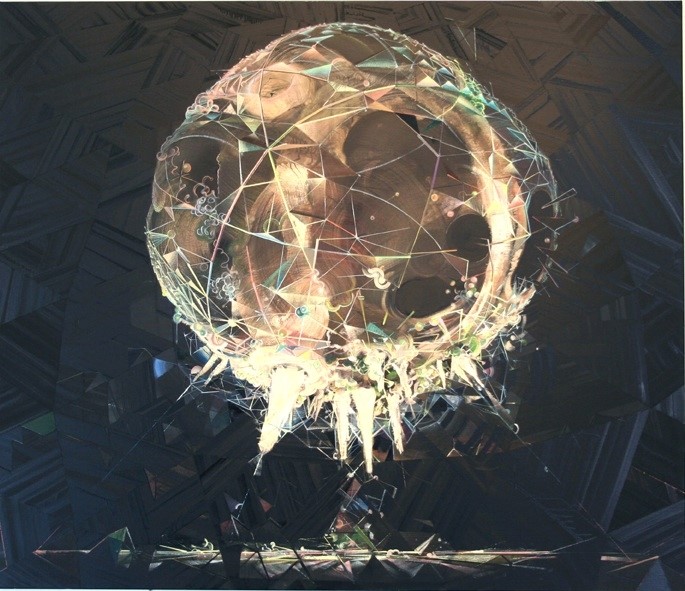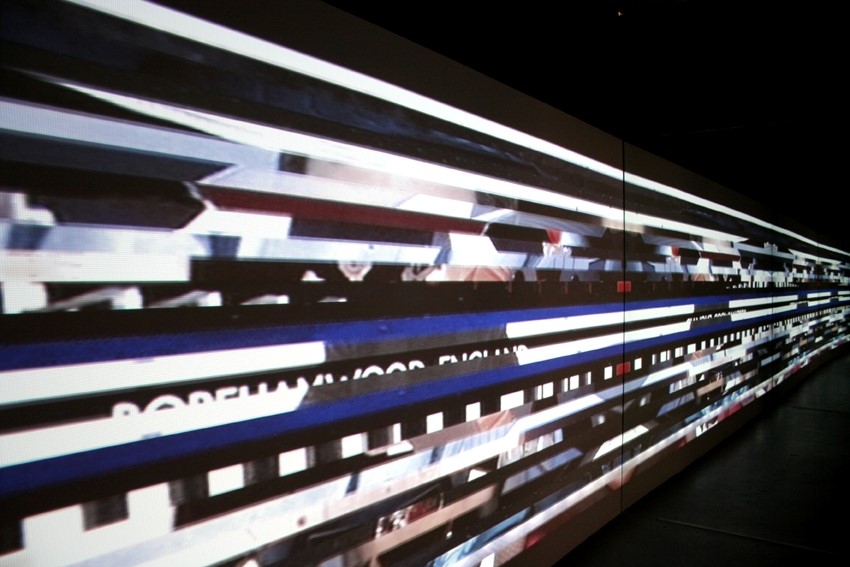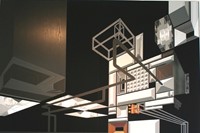Surface Warp Factor is one of the most spaced-out shows you are likely to see this year. Despite a title that makes one instantly think of a battle scene in Star Trek, it’s a stunningly executed exploration of the relationship between science

Surface Warp Factor is one of the most spaced-out shows you are likely to see this year. Despite a title that makes one instantly think of a battle scene in Star Trek, it’s a stunningly executed exploration of the relationship between science fiction, modernism and geometry, containing work by eight contemporary artists. I zipped up my spacesuit and stepped through the airlock to talk to the curator and participating artist Richard Ducker about sinister black objects, seven-minute versions of Kubrick’s 2001 and dystopian visions of the stock exchange.
Tell us a little about what inspired the show
The interest was multiple: science fiction, modernism and geometry. Modernism displayed a tendency towards reductive geometry in its search for a visual language to express utopian aspiration, and there are lots of artists currently reinventing this language by looking at science fiction. Others are tackling science fiction head on, using the genre to re-configure their art and address utopian fantasies. These relationships interested me more than science fiction as a genre per se, which tends to be a pretty flat genre without dramatic tension or narrative drive. I think it was Susan Sontag who compared its structure to pornography in that sense.
Why do you think we have an obsession with future projections?
It’s our nature. We have the ability to understand legacy because, unlike animals, we understand the notion of a future, and that means we want to fashion it to our own desires. This fills us with optimism or dread. As religion fails us it is replaced with the hi-tech revolution that promises so much – and it is this gap that science fiction seems to want to fill, or at least articulate.
Can you envisage a unification of knowledge in the future where art and science meld?
It is an interesting question because after a time new media do get added to the lexicon of artistic practice, but it takes time to filter into the discourse of ideas and become relevant; to become more than the latest gizmo. Historically, art has always flirted with technology – think of the camera obscura in the 18th century – but it’s not the technology itself that ends up being interesting, it’s how it changes the existing language and opens up new ways of thinking. It’s the ideas that count.
How have the artists in the show tackled the science fiction theme?
If there is common trend in the show it is a way of reinventing each artist’s chosen language, and in most cases it is the cinematic that is being appropriated. Sheena Macrae has taken 2001, made it seven-minutes long and cut it into strips presented between two mirrors. The effect is of an abstract moving painting reflected to infinity. Tom Ormond has created illusions of utopian structures to open up new avenues in landscape painting. Dystopia is very much Gordon Cheung’s concern: in almost every case, his paintings begin with a background of the FT stock listings over which melting landscapes of vivid electric colours emerge. Diann Bauer’s work references the pulp fiction imagery of the theme. It is the visual excess that interests her, as it does all writers of science fiction.
Surface Warp Factor is on show at the Aubin Gallery until July 25



